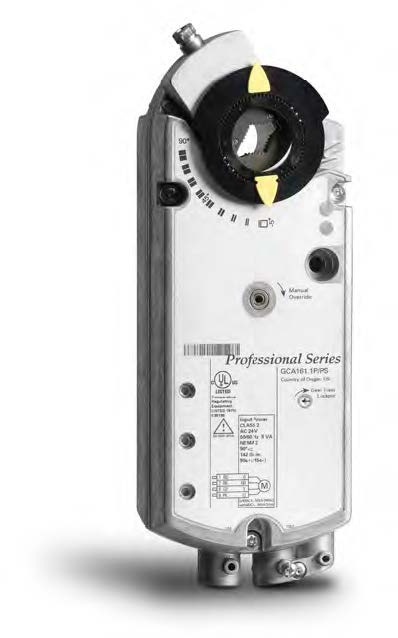
In recent years, HVAC trade magazines have cited that more than one third of the commercial HVAC systems in the United States are broken. They also point out the poor state of HVAC equipment across much of the K–12 market. Installing upgraded HVAC equipment and effective building control systems in new and existing buildings significantly improves occupant comfort and productivity, but it is the damper actuators that move the equipment and allow the user to deploy control strategies. Because damper actuators enable HVAC systems to deliver measurable, sustainable energy savings, Siemens offers these tips on selecting the right product for your project.
As you upgrade facilities with improved environmental building controls, check damper actuator operation to ensure you maintain your system’s energy savings. If you need to replace the actuator, consider the following:
- How much torque is required to move the equipment?
- For retrofits or new installations, how much torque is required from the actuators?
- What are the characteristics of the HVAC system?
The size, quantity, and ultimate selection of actuators required depend on the factors below:
- Type of damper seals (standard, low, or very low leakage)
- Number of damper sections
- Approach air velocity
- Static pressure
- Control signal and other features required for operation
- Quality and environmental operating conditions of the damper installation
Calculating Torque Requirements
Follow these steps to determine how much torque is needed to move the equipment:
- From the damper or equipment manufacturer, calculate the damper torque rating (DTR) for the damper at the most severe operating conditions. If it is not available, use the table below to estimate the leakage type, static pressure, and air velocity.
- Calculate the damper area (DA) in square feet (L×W) from the damper dimensions.
- Calculate the total damper torque (TDT) in pound-inches using the following formula: TDT = DTR × DA.
- Apply a safety factor to that torque (20 percent more than the calculation determined is advised).

Damper Actuator Selection Criteria
Given the required torque, decide the following damper actuator selection criteria:
Does the equipment need to close in the event of a power loss to stop cold air from entering the building or freezing other equipment?
If so, then a spring return (SR) actuator is needed where a physical spring or another mechanism like capacitors move the actuator/equipment position to the closed position in the absence of power. If the answer is “no,” damage to the equipment or building will occur in the event of a power failure, as in the case of an interior space, and a fail-in-place or non-spring return (NSR) actuator can be used.
What input power will the actuator need to operate: 24 VAC, 24 VDC, or 120 VAC? What type of control is needed for the equipment/application: two-position (open/closed), floating control, or modulating the equipment in signals of 0–10 VDC voltage or 4–20 mA current signals?
Once voltage and signal requirements are understood, determine what size connection is required to operate the equipment. A self-centering shaft adapter connection is especially useful when high torque actuation is required and provides many advantages over other shaft connection methods:
- Save installation time through quick connection to the equipment shaf
- No call-backs from slipping shafts
- Long life and successful operation on a wide range of equipment shaft sizes
Other features to consider include using low-voltage plenum-rated product when local codes allow plenum-rated actuators to be installed without the need for conduit, saving cost and eventual metal disposal concerns. When proof of equipment closure is required, built-in dual adjustable auxiliary switches not only save time by eliminating a complicated installation but also can be set in five-degree increments for maximum control system adaptability. Also, consider protection of the actuator from outdoor elements and the connection methods needed when you cannot connect directly to the equipment shaft.
Finally, ensure the control system is deploying an efficient control strategy to the equipment and actuators in operation.
For more information, visit www.usa.siemens.com.


